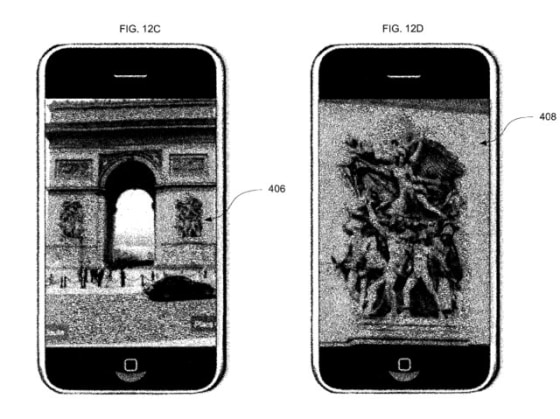A Google patent has just been granted that allows for "zooming using pre-existing imaging" — in other words, zooming in from your photo to another one. For instance, you could go from your snapshot of the Mona Lisa directly to a high-res scan from the Louvre.
Everyone has had this problem when snapping pictures on vacation. You spot an interesting building or painting and take a picture to remember it by — but when you review your shot later, you find that it's not quite the high-definition reproduction you'd hoped for. This is especially a problem with cellphone pictures, which are great for everyday shots but up close lack sharpness and detail.
What Google has patented is a way to provide a seamless mechanism for identifying an object or location in a picture, and serving the user a better image. The image above, from the patent, shows how this notable feature of the Arc de Triomphe in Paris would be replaced with a higher-quality one once the user achieves the maximum zoom possible on their device.
For such obvious landmarks like that one, it would be enough to match it to similar images from Google's database and return a nice high-resolution version, if they can find one. In this way, one could zoom in close on a painting or sculpture as well, and possibly be served additional information, such as the artist, date and address.
But if the subject of the photo isn't quite so easy to identify, Google would use the GPS and sensor data embedded in the original image to determine the user's location and orientation. From there it could choose from other images known to have been taken on that street, at that position, and in that direction — even at that same time of day or year. Street View data would be helpful in this case.
None of Google's existing products use this technique, but it's easy to see how it might be integrated into something like Google Glass or an augmented camera app. Interestingly, the images in the patent application are on iPhones rather than a device running Android, Google's open-source mobile operating system. This is likely because the application was prepared before Android's public launch.
— Via Engadget
Devin Coldewey is a contributing writer for NBC News Digital. His personal website is coldewey.cc.
